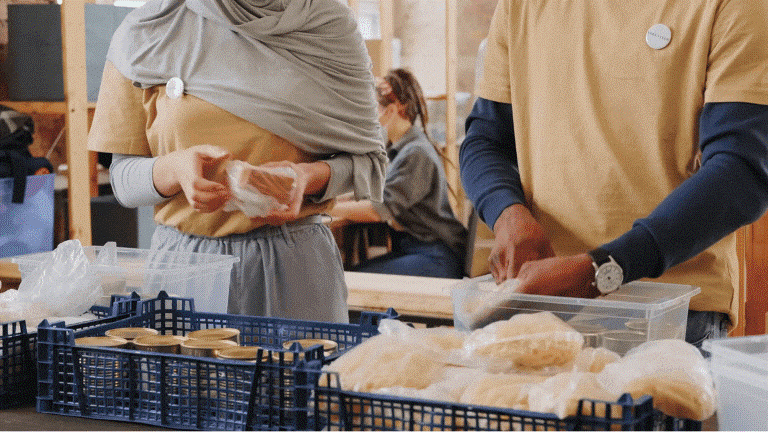Sustainable Dining in Italian Restaurants: What It Means for Food Lovers and the Planet
No cuisine holds you in its spell the way the Italian one does. There’s no doubt that Italy’s culinary heritage is one of the richest, and throughout the globe, people love fragrant basil leaves to tomatoes bursting with flavor. That said, it is embracing a new ethos as Italian restaurants look to sustainable dining. Continuing that, chefs and restaurateurs are getting in on the game, adopting such practices as honoring age-old recipes and protecting the environment for the next generation with growing awareness of climate change and ecological stewardship.
In this article, we examine how this movement has come into place, the part that organic Italian food sustainability plays in the movement, and why you need to take care if you care about your food and eat with a clear conscience.
Why Sustainable Italian Cuisine Matters
Italian cooking has always been about fresh, high-quality ingredients grown in harmony with the land. Today’s sustainable Italian cuisine builds on that heritage by taking deliberate steps to minimize environmental impact. It’s a holistic approach that goes beyond taste, it’s about ensuring that local communities, marine life, and farmland all thrive long-term.
- ● Preservation of Traditions By focusing on locally sourced, seasonal produce, restaurants are keeping Italy’s culinary customs alive. Recipes reflect the rhythm of the land and sea, reminiscent of how rural families have cooked for centuries.
- ● Reduced Carbon Footprint: Buying ingredients from nearby farms or engaging in responsible fishing reduces transportation emissions. This is a prime example of how Italian restaurants go green, blending old-world techniques with modern sustainability goals.
- ● Transparency and Trust: Patrons increasingly want to know exactly where their food comes from. Chefs and owners who showcase sustainable food practices in Italian dining earn their customers’ confidence—and keep them coming back for more.
How Italian Restaurants Go Green

Below are key ways Italian restaurants are reducing their ecological impact while still delivering unforgettable meals.
Sourcing Local and Organic Produce
Locally grown vegetables and fruits don’t just taste better; they cut down on the carbon emissions tied to long-distance transport. Restaurants committed to organic Italian food sustainability often:
- ● Partner with Regional Farms : Ensuring the freshest ingredients while supporting small-scale agriculture.
- ● Emphasize Seasonality : Cherry tomatoes and zucchini blossoms star in summer menus, while pumpkins and chestnuts shine in autumn dishes.
- ● Reduce Chemical Use : Avoiding pesticides keeps soil and waterways cleaner, ultimately protecting both wildlife and diners’ health.
Minimizing Waste in the Kitchen
Waste reduction forms a cornerstone of sustainable food practices in Italian dining. Many chefs rely on traditional Italian ingenuity—like turning yesterday’s bread into panzanella or using vegetable trimmings for stocks.
Other initiatives include:
- ● Composting : Transforming food scraps into nutrient-rich soil.
- ● Reusable Containers : Storing ingredients in glass or sturdy plastic rather than single-use materials.
- ● Creative Menu Planning : Designing dishes that utilize every part of the plant or animal.
Adopting Energy-Efficient Measures:
Energy efficiency is another hallmark of how Italian restaurants go green. Establishments now invest in low-consumption lighting, appliances with top energy ratings, and even solar panels.
- ● LED Lighting : Offers bright illumination without draining excessive power.
- ● Green Architecture : Restaurants sometimes integrate natural building materials or living walls (vertical gardens) to regulate temperature naturally.
- ● Solar or Geothermal : Cutting-edge technology that supplies electricity or heating from renewable sources.
Sustainable Seafood in Italian Cuisine:
No discussion of sustainable dining in Italian restaurants would be complete without exploring sustainable seafood in Italian cuisine. Italy’s coastal regions like Liguria, Sicily, and Puglia, depend on fishing traditions that stretch back generations.
However, modern practices can jeopardize delicate marine ecosystems if not managed responsibly.
Here’s how eco-conscious chefs ensure a bountiful sea for years to come:
- ● Selecting Abundant Species : Certain fish populations are overfished, so restaurants opt for more plentiful species. Replacing endangered tuna or swordfish with mackerel or anchovies can yield equally flavorful dishes that respect biodiversity.
- ● Sourcing from Certified Fisheries : Many chefs partner with suppliers certified by reputable agencies, guaranteeing ethical catch methods that avoid large-scale habitat damage.
- ● Line-Catching and Seasonal Quotas : Responsible approaches like line-catching limit bycatch, which often harms unintended species, while adhering to seasonal quotas preserve fish stocks for the future.
A Future Built on Organic Italian Food Sustainability
The rise of eco-friendly Italian cuisine reveals that sustainability isn’t a hindrance to flavor—it’s a pathway to richer, more vibrant food. By prioritizing organic Italian food sustainability and sustainable seafood in Italian cuisine, restaurants are preserving Italy’s gastronomic heritage while securing its future.
It’s a journey that started centuries ago in small rural villages and with modern innovation, it’s poised to shape Italian dining for generations to come. Blu Ristorante offers an elegant take on classic Italian cuisine, blending modern flair with old-world hospitality. Indulge in their carefully curated menu while enjoying a sophisticated ambiance that makes every meal memorable.
Buon appetito and cheers to a greener tomorrow—one plate at a time.
FAQs
How do Italian restaurants practice sustainability?
Many establishments champion sustainable dining in Italian restaurants by partnering with local farms, prioritizing seasonal ingredients, and adopting resource-efficient methods in the kitchen. These efforts reflect how Italian restaurants go green, ensuring each dish respects both tradition and the environment.
What are common sustainable ingredients in Italian food?
Chefs committed to sustainable Italian cuisine often lean on locally grown produce such as tomatoes, basil, and olives, all cultivated under organic Italian food sustainability guidelines. In regions near the coast, sustainable seafood in Italian cuisine frequently appears on menus featuring fish species caught with minimal bycatch and eco-friendly harvesting methods.
How do Italian restaurants reduce food waste?
Many restaurants employ techniques like composting, reusing kitchen scraps for stocks, or turning leftover bread into croutons and other creative dishes. Such strategies go beyond mere cost savings; they embody the core values of eco-friendly Italian cuisine, where every part of the ingredient is honored and thoughtfully used.
How can diners support sustainable Italian restaurants?
Diners can endorse sustainable dining in Italian restaurants by selecting eateries known for local sourcing, minimal packaging, and organic Italian food sustainability. Asking about menu transparency, choosing dishes marked as responsibly sourced, and leaving constructive feedback all help drive how Italian restaurants go green.
